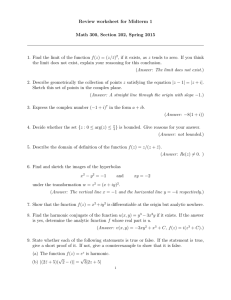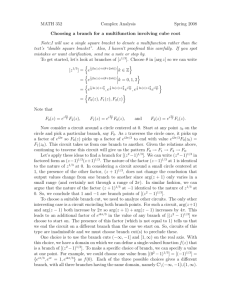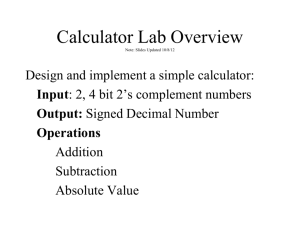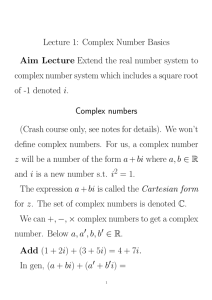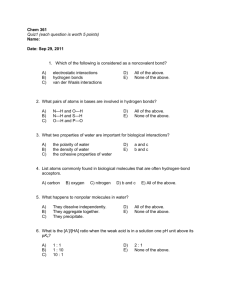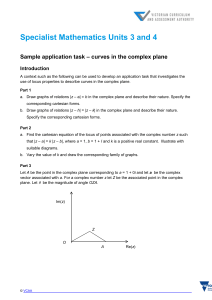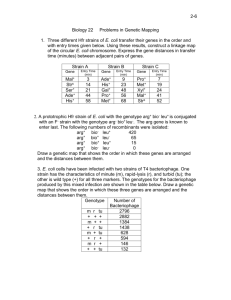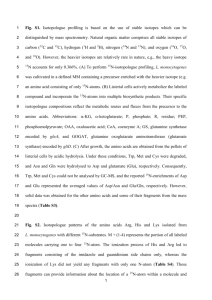z radius
advertisement
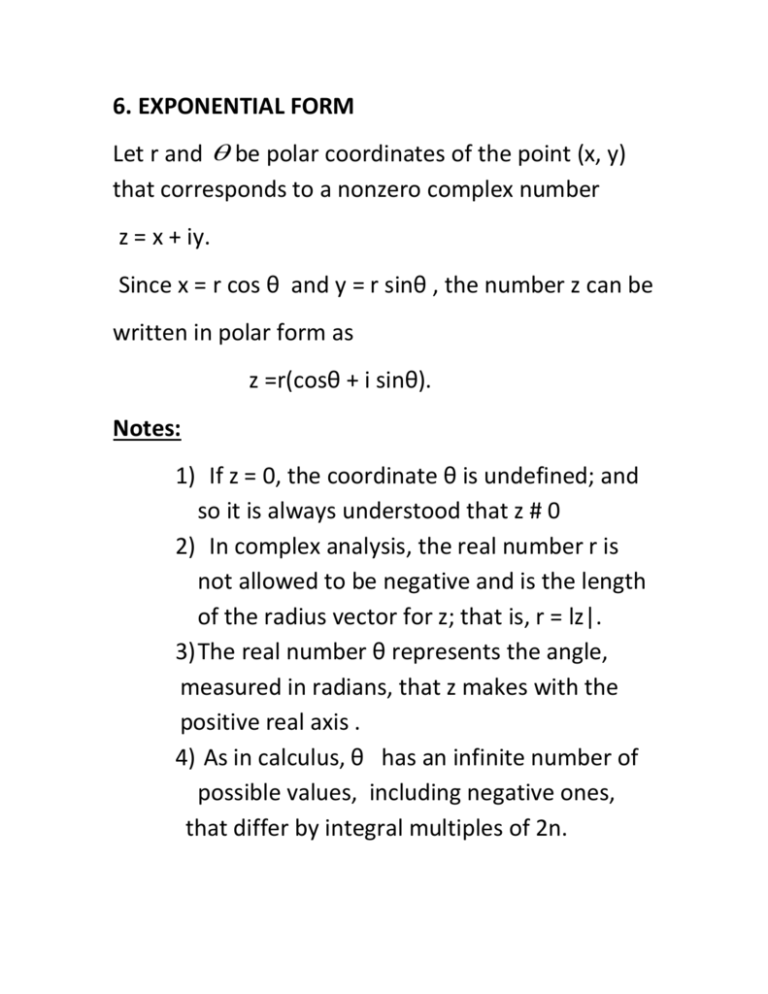
6. EXPONENTIAL FORM Let r and be polar coordinates of the point (x, y) that corresponds to a nonzero complex number z = x + iy. Since x = r cos θ and y = r sinθ , the number z can be written in polar form as z =r(cosθ + i sinθ). Notes: 1) If z = 0, the coordinate θ is undefined; and so it is always understood that z # 0 2) In complex analysis, the real number r is not allowed to be negative and is the length of the radius vector for z; that is, r = lz|. 3) The real number θ represents the angle, measured in radians, that z makes with the positive real axis . 4) As in calculus, θ has an infinite number of possible values, including negative ones, that differ by integral multiples of 2n. 5) Those values can be determined from the equation tan θ = y / x , where the quadrant containing the point corresponding to z must be specified. Definitions : 1) Each value of θ is called an argument of z, and the set of all such values is denoted by arg z. 2) The principal value of arg z, denoted by Arg z, is that unique value Θ such that -π < Θ ≤ π. Note that 1) arg z = Arg z + 2nπ (n = 0, ±1, ±2, ...). 2) when z is a negative real number, value π, not -π . Arg z has Example : Find Arg (-1-i) and arg(-1-i) Definition: The symbol eiθ or exp(iθ), is defined by means of Euler's formula as eiθ= cos θ + i sin θ, where θ is to be measured in radians. It enables us to write the polar form in exponential form as z = r eiθ EXAMPLE 2. Write The number -1-i exponential form. in Note: Exponential expression with r = 1 tells us that the numbers eiθ lie on the circle centered at the origin with radius unity. Geometrically it is obvious that eiπ = -1 , eiπ/2 = -I , and e-i4π = 1 Note, too, that the equation Z=Reiθ , (0 ≤ θ ≤ 2π) is a parametric representation of the circle |zl = R, centered at the origin with radius R. More generally, the circle |z - zol = R, whose center is zo and whose radius is R, has the parametric representation z = z0 + Reiθ , (0 ≤ θ ≤ 2π) Examples:
